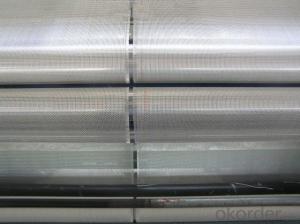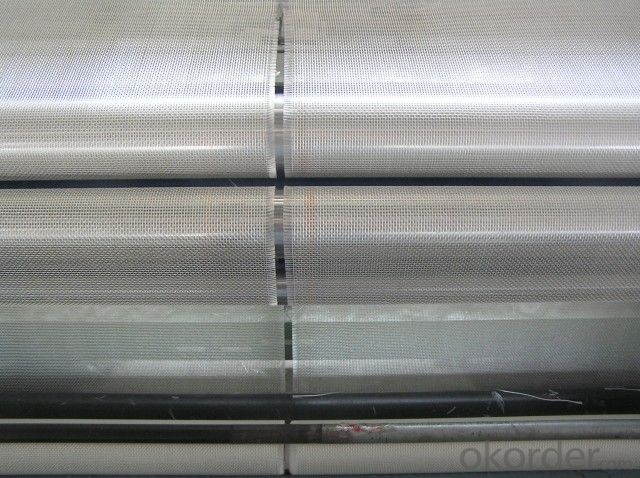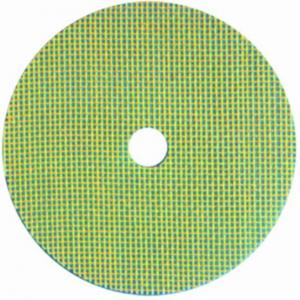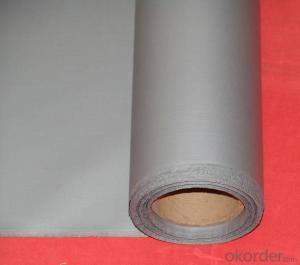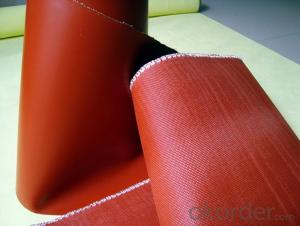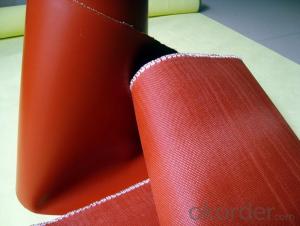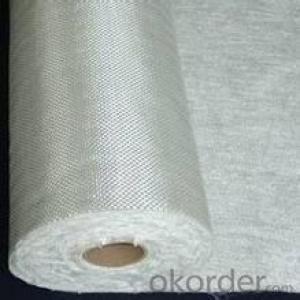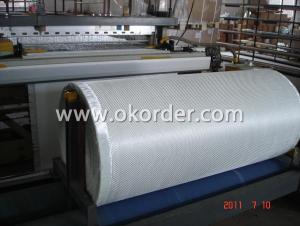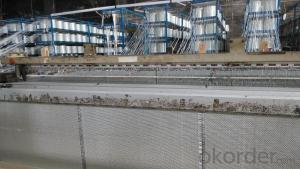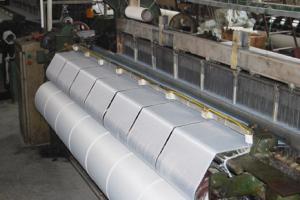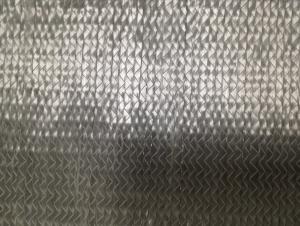Fiberglass Silicone Fabric for Grinding Wheel
- Loading Port:
- Shanghai
- Payment Terms:
- TT OR LC
- Min Order Qty:
- 10 m.t.
- Supply Capability:
- 100 m.t./month
OKorder Service Pledge
OKorder Financial Service
You Might Also Like
FIBERGLASS YARN is made from different glass fiber filaments, which are then gathered and twisted into one individual yarn. Characteristics :consistent linear density, Application: Mainly used for weaving various reinforce, insulation, anticorrosion, heat insulation fabric and sleeves etc. We can supply different shapes and roll weight, such as milk bobbin, 3.5kg big and 1.0g /0/5kg small paper bobbin |
style | Weave pattern | Yarn description | Count(in) | Weight (g/m2) | Thickness (mm) | |
warp | fill | |||||
116 | plain | ECD450 1/2 | ECD450 1/2 | 60 x 60 | 108 | 0.095 |
2116 | plain | ECE225 1/0 | ECE225 1/0 | 60 x 58 | 105 | 0.09 |
2165 | plain | ECE225 1/0 | ECG150 1/0 | 60 x 52 | 123 | 0.10 |
7628 | plain | ECG75 1/0 | ECG75 1/0 | 44 x 31 | 200 | 0.18 |
3732 | twill | ECG37 1/0 | ECG37 1/0 | 48 x 32 | 430 | 0.43 |
3784 | satin | ECG37 1/2 | ECG37 1/2 | 44 x 35 | 870 | 0.80 |
| Remark: The above data are only the representative products, there are different threads, such as 1/3,2/2,2/3,1/5……etc. Also have C-Glass yarn. |
- Q: How does fiberglass fabric compare to Kevlar fabric?
- Both fiberglass fabric and Kevlar fabric find extensive use in various industries due to their desirable properties. However, they possess distinct differences that make them suitable for different applications. To begin with, fiberglass fabric is woven together using fine strands of glass fibers. It is renowned for its exceptional strength and durability, making it a popular choice for applications that demand high tensile strength and resistance to abrasion. Moreover, fiberglass fabric exhibits excellent heat and chemical resistance, making it suitable for insulation, electrical components, and corrosion-resistant applications. On the contrary, Kevlar fabric is crafted from synthetic para-aramid fibers, which are known for their outstanding strength-to-weight ratio. In comparison to fiberglass fabric, Kevlar fabric is significantly stronger, boasting a higher tensile strength. This characteristic renders it ideal for applications where weight reduction and high impact resistance are critical factors, such as bulletproof vests, body armor, and aerospace components. Another notable contrast between these two fabrics lies in their heat resistance properties. Although fiberglass fabric showcases excellent heat resistance, Kevlar fabric exhibits remarkable flame resistance. Consequently, Kevlar fabric proves highly suitable for applications that prioritize fire protection, including firefighting suits and thermal insulation. In terms of cost, fiberglass fabric is generally more affordable than Kevlar fabric. The latter is relatively expensive due to its advanced manufacturing process and superior performance characteristics. In conclusion, the selection between fiberglass fabric and Kevlar fabric ultimately depends on the specific requirements of the application. Fiberglass fabric excels in providing strength, durability, and resistance to heat and chemicals, while Kevlar fabric offers an exceptional strength-to-weight ratio, impact resistance, and flame resistance.
- Q: How is fiberglass fabric used in the marine industry?
- Due to its unique properties and versatility, fiberglass fabric finds extensive use in the marine industry. Boat building and repair are its primary applications, providing exceptional strength, durability, and corrosion resistance. For boat construction, fiberglass fabric is utilized to form the hull, deck, and other structural components. It is typically combined with resin to create a lightweight yet incredibly strong composite material. The fabric is layered, impregnated with resin, and then cured to establish a rigid and robust structure. One of the key advantages of fiberglass fabric lies in its ability to withstand the harsh marine environment. It boasts high resistance to water, chemicals, and UV radiation, making it perfect for boats constantly exposed to saltwater and sunlight. This resistance significantly reduces maintenance and repair costs associated with marine vessels. Fiberglass fabric also serves in the restoration and repair of boats. It can be applied to damaged areas, reinforcing the structure and restoring the vessel's integrity. The fabric can be easily molded and shaped to fit the boat's specific contours, ensuring a seamless repair. Furthermore, fiberglass fabric plays a role in the production of marine accessories and equipment. Its lightweight nature and resistance to moisture and corrosion make it a common choice for manufacturing boat seats, storage compartments, and panels. In summary, fiberglass fabric holds great importance in the marine industry. Its strength, durability, and resistance to the marine environment make it an ideal material for boat construction, repair, and various marine applications.
- Q: Can fiberglass fabric be used for insulation in nuclear power plants?
- Yes, fiberglass fabric can be used for insulation in nuclear power plants. Fiberglass is a commonly used material for insulation in various industries, including nuclear power plants. It offers several advantages such as excellent thermal resistance, fire resistance, and low thermal conductivity. These properties make it suitable for insulating equipment and components in nuclear power plants where high temperatures and potential fire hazards are present. Additionally, fiberglass is also resistant to moisture, chemicals, and radiation, which are significant considerations in the nuclear industry. However, it is important to note that the specific application and required safety standards should be taken into account when selecting and installing insulation materials in nuclear power plants.
- Q: How is fiberglass fabric stored and transported?
- Fiberglass fabric is typically stored and transported in a way that ensures its protection and preservation. Firstly, it is important to keep the fabric in a dry and temperature-controlled environment to prevent moisture absorption and mold growth. The fabric rolls are usually stored vertically, on pallets or racks, to avoid any unnecessary pressure that may lead to deformation or damage. When it comes to transportation, fiberglass fabric is typically shipped in rolls. These rolls are often packaged in protective plastic wrap or bags to shield them from dust, dirt, and potential water damage during transit. Additionally, the rolls may be placed in sturdy cardboard boxes or placed on pallets to provide further support and prevent any shifting or movement during transportation. During transit, it is crucial to handle the fabric rolls with care to avoid any unnecessary stress or impact that may lead to tears or damages. This includes securing the rolls in the transportation vehicle using straps or other securing mechanisms to prevent movement and potential damage. Overall, proper storage and transportation of fiberglass fabric involve maintaining a suitable environment and taking precautions to protect the fabric from external elements and physical stress. By following these guidelines, the integrity and quality of the fiberglass fabric can be preserved, ensuring it arrives at its destination in optimal condition.
- Q: Can fiberglass fabric be used for reinforcement in septic tanks?
- Yes, fiberglass fabric can be used for reinforcement in septic tanks. Fiberglass fabric is known for its strength and durability, making it an excellent choice for reinforcing structures, including septic tanks. The fabric can be used to reinforce the walls and base of the tank, providing additional strength and preventing cracks or leaks. Additionally, fiberglass fabric is resistant to corrosion, which is important in a septic tank environment where there can be high levels of sewage and chemicals. Overall, using fiberglass fabric for reinforcement in septic tanks can enhance their longevity and structural integrity.
- Q: Are fiberglass fabrics biodegradable?
- No, fiberglass fabrics are not biodegradable. Fiberglass is made of glass fibers that are woven together to create a strong and durable fabric. Since glass is not biodegradable, fiberglass fabrics do not break down naturally over time. This means that when disposed of, fiberglass fabrics can contribute to environmental pollution and waste accumulation. It is important to properly recycle or dispose of fiberglass fabrics to minimize their impact on the environment.
- Q: What color steel plate is good for dust-free workshop?
- Polyurethane sandwich panel consists of upper and lower intermediate color steel polyurethane foam composition, is one of the widely used building materials in the construction industry, has good thermal insulation, sound insulation, fire prevention materials added non combustion polyurethane. The polyurethane sandwich board has the advantages of non burning, moisture resistance, moth resistance, sound insulation, light weight, dry and wet, no deformation and heat preservation effect, and can be nailed, sawed and constructed, which is simple and convenient, and can be used repeatedly.
- Q: What are the different surface textures available for fiberglass fabric?
- There are various surface textures available for fiberglass fabric, including smooth, coarse, woven, knitted, and textured.
- Q: How does fiberglass fabric perform in chemical exposure?
- Fiberglass fabric generally performs well in chemical exposure as it is highly resistant to most chemicals, including acids, alkalis, and solvents. It maintains its structural integrity and does not degrade or weaken when exposed to various chemical substances, making it suitable for a wide range of industrial applications where chemical resistance is required.
- Q: How does fiberglass fabric handle oil and chemical spills?
- Fiberglass fabric is highly resistant to oil and chemical spills. It is non-absorbent and does not react with most chemicals, making it an effective material for containing and cleaning up such spills. The fabric's durability and high tensile strength allow it to withstand the harsh effects of oil and chemicals, making it a reliable choice for spill control and containment measures.
Send your message to us
Fiberglass Silicone Fabric for Grinding Wheel
- Loading Port:
- Shanghai
- Payment Terms:
- TT OR LC
- Min Order Qty:
- 10 m.t.
- Supply Capability:
- 100 m.t./month
OKorder Service Pledge
OKorder Financial Service
Similar products
Hot products
Hot Searches
Related keywords
